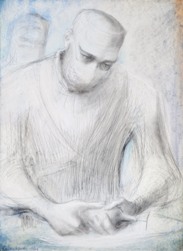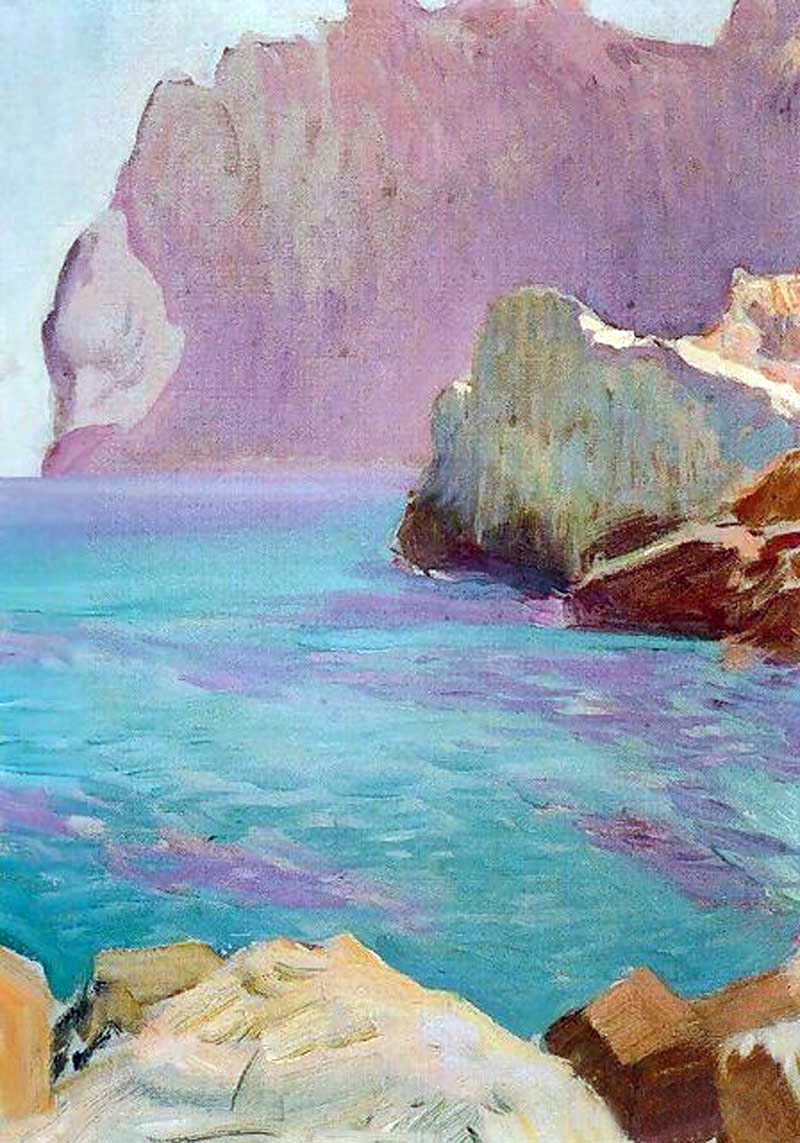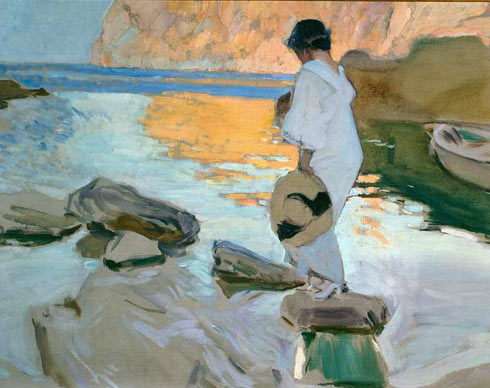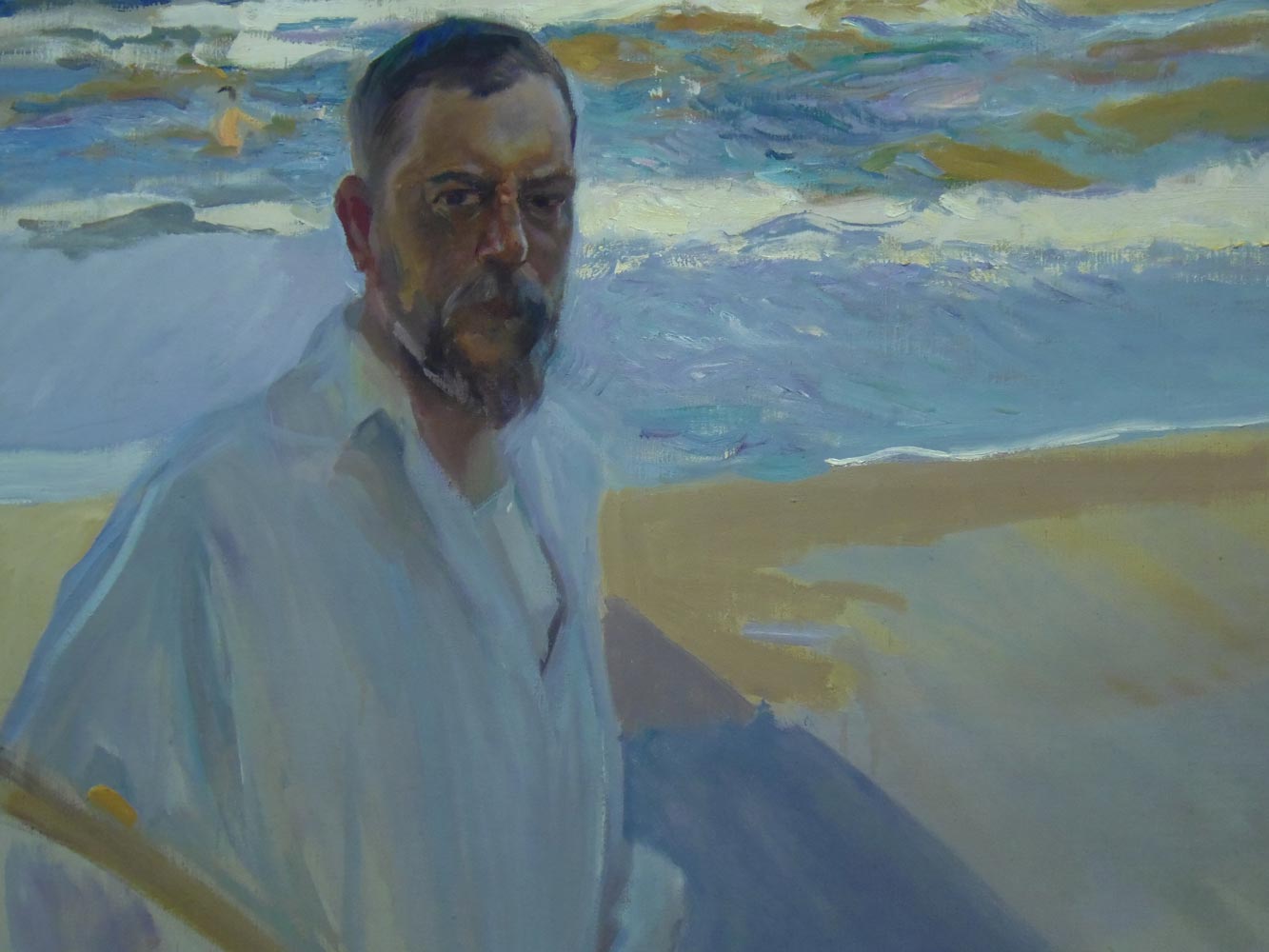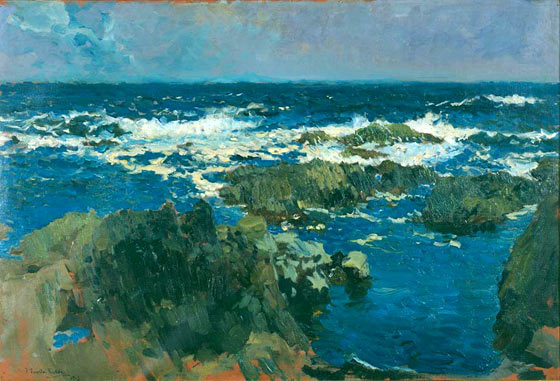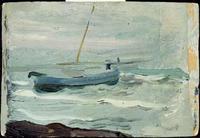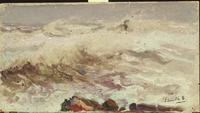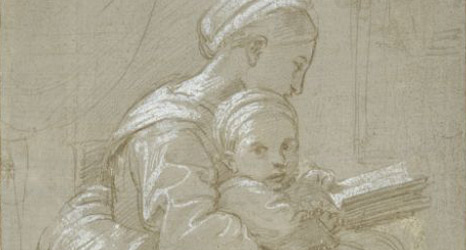Changing gears from producing art to matting and framing art for exhibitions is always a bit of a wrench, I find. I don't know if others find it to be so. First of all, of course, it depends on what the exhibition is to be about, and where the show is to be held. An exhibition in a museum is different from one in a gallery where your art is for sale, and the choice of artwork to exhibit will correspondingly be different. Not of less quality, nonetheless. Any professional artist will always try to put the best work out for exhibition, no matter where.
However, deciding on what the "best work" is can be an interesting exercice. I think any artist is always excited about the latest work done, and hopes and believes that it is better than previous work. Nonetheless, I have privately decided that whenever possible, it is good to put the art just completed aside for a while, so that I can then come back to it with a fresh eye. Only then can I have any distance and can better evaluate its merits and/or defects. I sometimes feel a little like the meandering salt water rivers entering the coastal Georgia marshes, such as I painted once.
I am in the throes of trying to do just such an "agonising reappraisal" of work I had put away in a drawer, all carefully stored in mylar envelopes for the metalpoints and acid-free tissue leaving for the watercolours. First of all, I needed to sort through to try to make a coherent ensemble for a solo exhibition I am holding in January-February at the new gallery for Glynn Visual Arts on St. Simons Island, Georgia. Having selected out some art, then comes the more critical, eagle-eyed time. And that is the hard part!
Having winnowed again, the resultant selection has to be matched up with types of mats - 4 ply or 8 ply museum mats. Next come their shades of white and cream (I tend to be super conservative in mat colours, trying to let the artwork speak for itself). Then what type of frame, what colour of moulding? So many decisions. And all part of the evaluation process because until the artwork on paper is matted, glazed and framed, you really do not know how it will finally look.
So I scratch my head a lot, turn the artwork upside down, walk away from it, come close to it. I play light on it (especially for metalpoint drawings because the metals shimmer when you catch them in the correct light and really come alive). I fiddle with mats, mouldings, skin my fingers screwing and unscrewing moulding pieces – such fun!
At the end of this whole evaluation process, which I suspect is familiar, in some form or another, to every artist, one just hopes that the result is an interesting, uplifting ensemble of art that appeals to the public.
Stay tuned for January's news!








